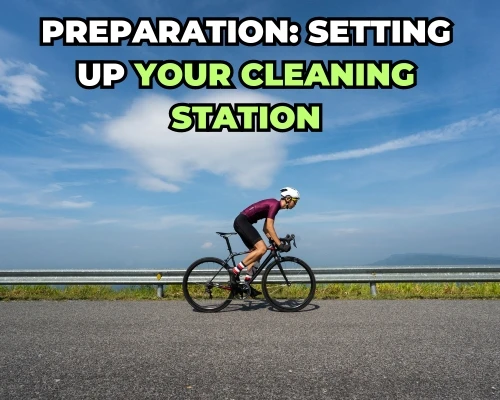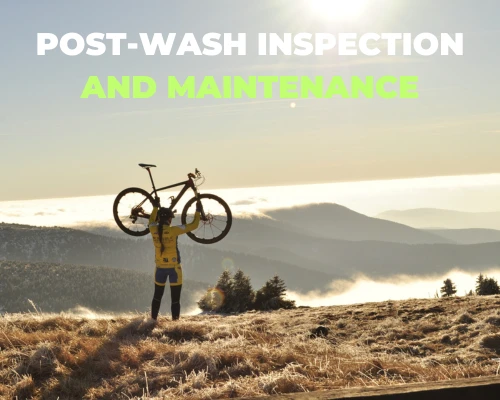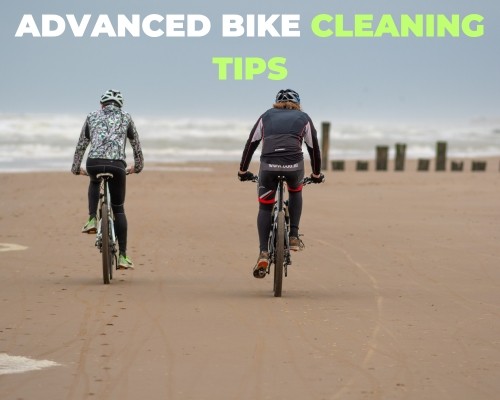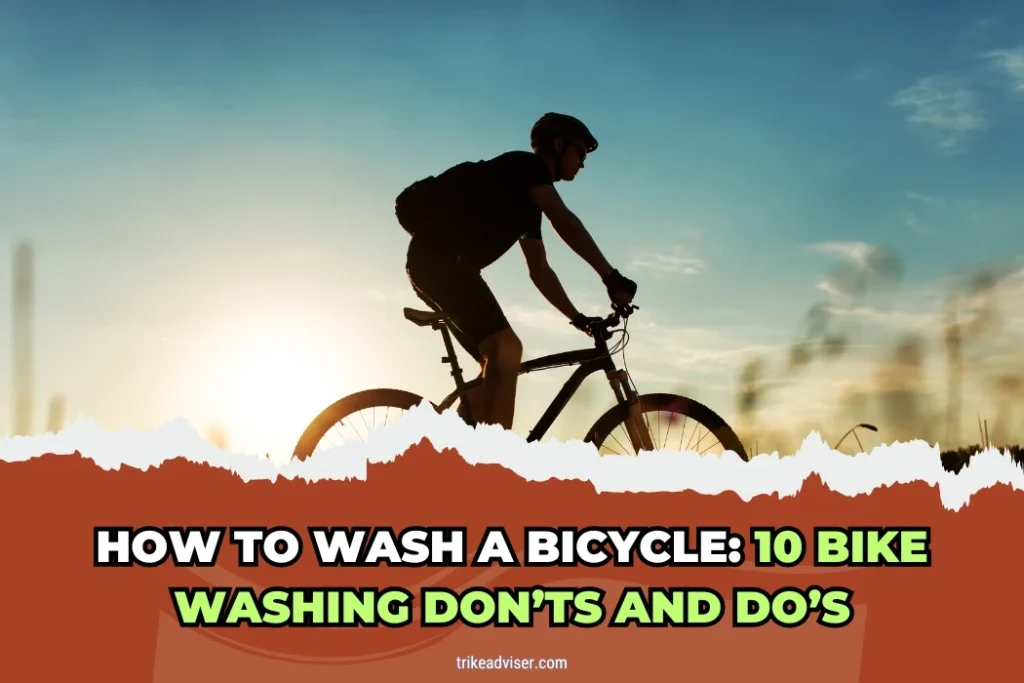Washing your bike seems straightforward, right? Grab a hose, some soap, and you’re golden. Not quite. The reality often hits harder than expected. Picture this: you’ve just finished cleaning, only to find your bike squeaking or rusting faster than before. Frustrating, I know.
Many riders, both rookies and seasoned, fall into simple traps, turning a quick wash into a bike’s nightmare. Questions pop up. Can water damage the bearings? Is any soap good soap? What about the chain? Fear not. Identifying these pitfalls is half the battle. The other half? Knowing the do’s and don’ts we’ve gathered.
This guide isn’t just about keeping your bike clean. It’s about safeguarding your beloved companion from premature wear, ensuring it’s always ready for the next ride. Let’s dive in, minus the dive, of course.
How to Wash A Bicycle: Do’s and Don’ts
Do’s of Bike Washing
Suspend the Bike
Elevating your bike isn’t just for pros. Using a bike repair stand or any makeshift setup lifts the bike, making every nook accessible. It’s not just convenient; it’s smart. This way, you can spot issues you’d miss otherwise.
Remove the Wheels
Detaching the wheels might seem like extra work. Yet, it’s a game-changer. With the wheels off, you can reach the hard-to-get areas, especially around the bearings and brake pads. Plus, inspecting for wear becomes a breeze.
Use Warm Soapy Water
Cold water just doesn’t cut it. Warm water, mixed with soap, works wonders in loosening dirt and grime. It makes the scrubbing part less of a chore and more effective. Think of it as a spa bath for your bike.
Use Grease-Cutting Soap
Not all soaps are equal. A grease-cutting formula, like Dawn, targets bike grease and oil, leaving your bike sparkling clean. It’s the difference between a clean bike and a “new” bike.
Rinse Before Scrubbing
Rinsing first might feel counterintuitive. However, this initial step washes away loose dirt that can scratch your bike’s finish during scrubbing. It’s about protecting while cleaning.
Don’ts of Bike Washing
Use High-Pressure Car Washes/Washers
High pressure sounds effective but is actually harmful. These washers can strip paint, remove decals, and force water into bearings, causing corrosion. It’s a quick way to turn cleaning into damaging.
Submerge Parts
Dunking your bike parts in water might seem like a thorough clean. However, it’s a shortcut to trouble. Water can seep into areas it shouldn’t, leading to rust and damage. Better to clean parts externally and leave the submerging to submarines.
Neglect Post-Wash Care
Here’s a bonus don’t: skipping post-wash care. After washing, dry your bike thoroughly, lubricate the chain, and check for any issues. It’s the perfect time to do so when your bike is clean and mechanisms are exposed.
Preparation: Setting Up Your Cleaning Station

Before diving into the suds and sparkle, setting up your cleaning station is step one. It’s about more than just space. It’s about efficiency, effectiveness, and caring for your bike the right way. Let’s break it down.
Choosing the Right Location
The perfect spot isn’t just any spot. Here’s what to look for:
Space: You need room to maneuver. A cramped garage corner won’t cut it. Look for open spaces where you can walk around the bike.
Water Access: Essential for rinsing and washing. A garden hose point nearby makes life easier.
Shelter: Weather can be a party crasher. Undercover areas prevent sudden rain from ruining the day.
Drainage: Water should drain away, not pool at your feet. Flat, hard surfaces are ideal. This setup ensures you’re not battling elements or cramped quarters while cleaning.
Gathering Necessary Tools and Supplies
Think of this as gathering your cleaning arsenal. Here’s what you’ll need:
Cleaning Agents:
Soap: Dawn Ultra or similar grease-cutting soap. It’s about targeting bike grime effectively.
Brushes and Sponges:
Soft Brushes: For general frame and component cleaning.
Bottle Brushes: To get into those tight spots like derailleurs and cassettes.
Wheel Brush: A soft, square-head brush is perfect for spokes and rims.
Rags: Clean shop rags or old cotton T-shirts work wonders for drying and polishing.
Water Source:
Garden Hose: With a trigger-style spray head for easy rinsing.
Bucket: For soapy water and rinse water.
Optional but Highly Recommended:
Bike Stand: Elevates the bike for easy access and thorough cleaning.
Chain Keeper: Keeps tension on the drivetrain, allowing you to clean the chain effectively.
Degreaser: Like Pedro’s Oranj Peelz Citrus Degreaser, for cutting through tough grease.
Post-Wash Inspection and Maintenance

The sparkle isn’t the final step. After washing, it’s crucial to give your bike a thorough post-wash inspection and tune-up. This ensures it’s not just clean but also safe and performance-ready. Let’s delve into the essentials.
Inspecting for Wear and Damage
Fresh from the wash, your bike is ready for a close-up inspection. Here’s what to check:
Tire Condition and Pressure: Look for cuts, thorns, or wear. Correct pressure keeps rides smooth and puncture-free.
Brake Pads: Worn pads compromise safety. Check for even wear and replace if thin.
Chain: A stretched or worn chain affects your drivetrain’s efficiency. Use a chain checker tool.
Cables: Frayed or damaged cables can fail unexpectedly. Replace if you see signs of wear.
Frame: Cracks or dents can lead to failure. Give it a thorough look-over, especially at weld points.
Wheels: Spin each wheel. It should move freely and not wobble. Wobbling means it’s time for truing.
Bolts and Fasteners: Loose bolts can lead to parts coming off. Check and tighten.
Regular inspections can prevent minor issues from becoming major headaches. It’s about maintaining your bike’s longevity and your safety.
Tightening and Adjustments
Now, ensure everything is as tight and aligned as it should be:
Bolts and Fasteners: Go over the bike with the appropriate tools, checking each bolt. Don’t overtighten; follow the manufacturer’s torque specifications.
Drivetrain: Check the chain tension and gear alignment. Misalignments here can lead to inefficient riding and increased wear.
Brakes: Ensure brake pads align with the wheel rims or brake discs properly. Adjust for optimal contact and performance.
Tightening and adjustments are about fine-tuning. They make the difference between a bike that feels okay and one that feels great. Plus, they’re vital for safety.
Lubrication
Chain and Moving Parts: Post-adjustment, apply lubricant to the chain, derailleurs, and any pivot points. It reduces wear and improves performance.
Final Check
Ride Test: If possible, take a short test ride to ensure everything feels right. Listen for unusual noises, check brake responsiveness, and confirm gear shifts are smooth.
Advanced Bike Cleaning Tips

Elevating your bike cleaning game isn’t just about keeping it sparkling. It’s about mastering the removal of stubborn grime and applying savvy protective measures. Let’s dive into the advanced techniques that keep your bike in pristine condition.
Dealing with Stubborn Grime
Tough dirt and grease don’t stand a chance with these strategies:
Degreaser: Begin with a hero product like Pedro’s Oranj Peelz Citrus Degreaser. It’s designed to cut through the grime that clings to your bike’s components, making it indispensable for tough jobs.
Focused Cleaning: Reach for a gear cleaning brush or an old toothbrush for precision work. These tools get into the nooks between gears and other hard-to-reach areas, ensuring no grime is left behind.
Thorough Scrubbing: Some areas need a bit more elbow grease. Apply focused effort to parts known for stubborn dirt, ensuring a deep clean that leaves no residue.
Protective Measures
After the clean, safeguard your bike’s shine and health with these protective practices:
Wax or Polish: A final flourish with a commercial spray cleaner/polish or quality wax, akin to products for motorcycles or automobiles, can shield your bike’s surfaces. This layer repels water and dirt, extending the cleanliness and shine of your bike.
Avoid Abrasives: It’s tempting to attack tough spots with something gritty, but hold back. Abrasive sponges or brushes can damage your bike’s paint and components, doing more harm than good.
Regular Maintenance: Beyond cleaning, regular servicing and maintenance are your bike’s best friends. Keeping on top of potential issues not only ensures longer-lasting cleanliness but also optimizes performance.
Additional Pro Tip
Dry Lube for Dry Conditions: In dry, dusty conditions, consider a dry lubricant for your chain. It attracts less dirt, keeping your drivetrain cleaner over longer rides.
Sealant for Puncture Prevention: Applying a tire sealant can prevent flats, reducing the need for frequent wheel cleaning and maintenance.
As an Amazon Associate, I earn from qualifying purchases, at no additional cost to you. Read Our Affiliate Disclosure.

